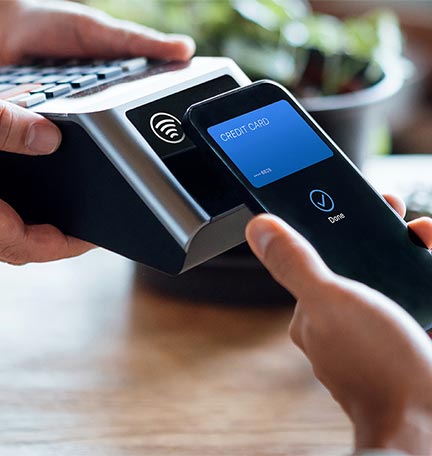Choose the program that best fits your business needs, and take these steps to prevent employee misuse and help protect against fraud.
Business credit cards and purchasing cards are powerful tools that can streamline your purchasing process and even earn rewards for your business. Today, such programs also offer safeguards against fraud and misuse, but it’s up to business owners to understand and take advantage of these features. Here’s how to choose the right card for your business, manage your employees’ spending, and best protect against fraud.
When choosing a card program, begin by assessing your business needs and desired credit line. Consider your spending habits and the card’s interest rate, credit limit, late payment policy, potential annual fees, and rewards program. Business credit cards allow users to make partial payments and revolve balances, whereas purchasing cards, or P-cards, require you to pay your balance in full each month. Their statements typically include more information than credit card statements and often eliminate the need to retain invoices.
“Both business credit cards and P-Cards provide the benefit of augmenting cash flow and the ability to track expenses, but what are your business’s needs? Do you need online account management tools? Do you need to control spending velocity and the types of purchases that can be made? Once you understand these factors, you can determine if the issuer provides the ability to fill those needs,” says David Smitherman, vice president, retail products and payments at Regions.
Switching to a business credit card or P-card typically streamlines the procure-to-pay process and lowers costs. “Migrating the procure-to-pay process from checks to P-cards can reduce transaction cost significantly,” says Chris Zimmer, senior vice president and director of commercial card services at Regions. “But there are a lot of changes that go along with introducing a new process, so also consider what type of support and guidance the provider offers, not just card functionality.”
To make sure the process of issuing business credit cards or purchasing cards to your employees goes smoothly and to limit internal misuse.
1. Document spending guidelines
Provide your employees with documented guidelines for card usage. This will limit expenditures and make it easier to enforce spending policies.
2. Utilize the systematic controls built into your card solution
“Examples include Merchant Category Code (MCC) blocking. If it’s not necessary for a particular cardholder to make an airline transaction, you can block that category. You can also limit the size of purchases and/or the number of transactions over a defined period,” says Zimmer.
3. Educate your team about the program benefits
“Educate the end users as to why the organization is using the new card and how it is going to benefit them, too. Oftentimes, change can trigger resistance, but if you effectively communicate the benefits to those end users, the program will be more successful,” says Zimmer.
4. Implement a refined review process
Make sure you take an organized approach to oversight. Although it may not be realistic to review every paper receipt, you should conduct routine audits and review individual spending and company trends regularly.
5. Safeguard the card
Your employees are responsible for all charges on their cards. That doesn’t mean they’re liable payment wise, but rather—they’re in control. Make sure they understand they have to manage their card just like they would any other sensitive company asset.
Preventing external fraud
Issuers are rolling out chip card technology in the U.S. to make in-store transactions more secure. The technology is already used in more than 80 countries. Because chip cards are more difficult to counterfeit, they can help reduce fraud. They contain encrypted information that provides an enhanced level of security for purchases, as long as they’re used at a chip-enabled terminal. “Regions Bank has already adopted this technology for credit cards and has begun the process of issuing new cards,” notes Smitherman.
Industry experts expect the migration to chip cards to be largely complete by the end of 2016. This migration also affects merchants, who are responsible for getting a chip-enabled terminal from their payment provider. “This is a pretty significant shift within the payment industry,” notes Zimmer. “It’s important for our business clients to realize that this is not just impacting the cards they use, but also their acceptance of cards for payments,” he says.
For more information on chip cards, visit http://www.gochipcard.com/











